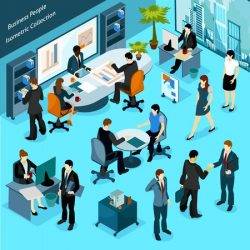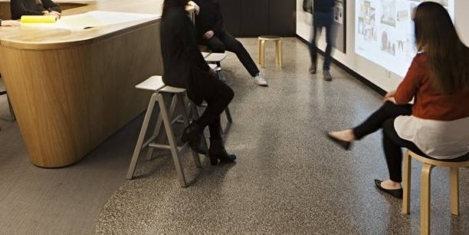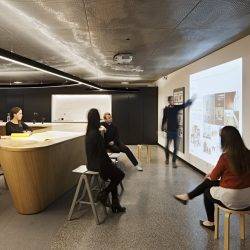November 1, 2017
Division of workplace hierarchy on impact of office design and flexible working

There is a divide in the importance placed on the office environment among different levels of the UK workforce, with new research suggesting C-Suite executives do not fully appreciate the factors that keep employees happiest at work and the impact that the office environment has on their employees’ productivity and wellbeing. According to the new research by Peldon Rose and are happier and work most productive in the office, 88 percent of middle management and 84 percent of junior employees say they always or sometimes enjoy coming to work every day compared to 76 percent of C-Suite executives. In addition, junior and middle management employees are more inclined to work in the office, with 62 percent and 63 percent, respectively, saying they prefer to work in the office over at home (29 percent, 30 percent) compared to C-Suite who prefer to work at home (40 percent) rather than the office (24 percent). As a result, just a quarter of junior employees believe their office has a culture that allows them to work flexibly compared to nearly half of C-Suite.






 The future workplace will replace familiar, rigid hierarchies and departments with small, collaborative networks of teams and the lines between individual organisations and ecosystems will blur as companies increasingly cast their net wider to innovate. This is one of the predictions made in a Fujitsu-commissioned whitepaper ‘
The future workplace will replace familiar, rigid hierarchies and departments with small, collaborative networks of teams and the lines between individual organisations and ecosystems will blur as companies increasingly cast their net wider to innovate. This is one of the predictions made in a Fujitsu-commissioned whitepaper ‘












 British workers are lagging behind employees from other countries when it comes to flexible working hours and benefits like extended leave, suggests new research. New independent research commissioned by travel specialists Opodo.co.uk compared Britain with other nations across Europe and the USA, which reveals that British companies are lagging behind other businesses when it comes to flexible working. Three-quarters of employees in the UK (75 percent) don’t believe they have a generous holiday allowance and 84 percent aren’t offered time back in lieu for days worked over the weekend. It’s of no surprise then that 69 percent of Brits don’t think they have a good work-life balance.
British workers are lagging behind employees from other countries when it comes to flexible working hours and benefits like extended leave, suggests new research. New independent research commissioned by travel specialists Opodo.co.uk compared Britain with other nations across Europe and the USA, which reveals that British companies are lagging behind other businesses when it comes to flexible working. Three-quarters of employees in the UK (75 percent) don’t believe they have a generous holiday allowance and 84 percent aren’t offered time back in lieu for days worked over the weekend. It’s of no surprise then that 69 percent of Brits don’t think they have a good work-life balance.


















October 9, 2017
Our Twentieth Century approach to ergonomics has to change
by Mark Eltringham • Comment, Flexible working, Technology, Wellbeing, Workplace design
More →